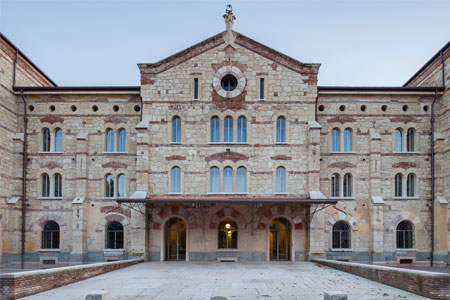Learning outcomes
Our aim is to help students realize that the changes occurred in contemporary society have very distant origins.
In socio-economic Italian history the birth of industrial districts represents an interesting typology of social and economic mobility, the result of a centuries-old urban tradition.
The course will focus on the exploration of the ways in which the “different” Italies gradually organised into a structured district system based on social and productive co-operation supported by a widespread disposition to social mobility. With regard to the Italian postwar economic development, great attention will be given to the forms of intergenerational mobility linked with the spread of industrial districts.
SPECIALIST DEGREE COURSE IN MARKETING AND COMMUNICATION
History and Theory of Social Mobility
PROF. MAURIZIO PEGRARI
Academic year 2009-2010
5 credits
Objectives
Our aim is to help students realize that the changes occurred in contemporary society have very distant origins.
Programme
In socio-economic Italian history the birth of industrial districts represents an interesting typology of social and economic mobility, the result of a centuries-old urban tradition.
The course will focus on the exploration of the ways in which the “different” Italies gradually organised into a structured district system based on social and productive co-operation supported by a widespread disposition to social mobility. With regard to the Italian postwar economic development, great attention will be given to the forms of intergenerational mobility linked with the spread of industrial districts.
The course will cover the following topics:
1. Urban traditions, co-operation and solidarity in modern and contemporary Italy;
2. Modernization and social mobility;
3. Postwar Italian economy: intergenerational mobility;
4. Social capital, co-operation and reliability;
5. Industrial districts: history teaches a lesson.
Textbooks
For students who attend the lectures regularly
The notes taken during the lectures
R.D. Putnam, La tradizione civica nelle Regioni italiane, Milano, Mondadori, 1997, capp. V e VI;
S. Brusco . S. Paba, Per una storia dei distretti industriali italiani dal secondo dopoguerra agli anni novanta, in F. Barca, a cura di, Storia del capitalismo italiano dal dopoguerra ad oggi, Roma, Donzelli, 1997, pp. 265-333;
A. Bagnasco, Tracce di comunità, Bologna, il Mulino, 1999, capp. IV, V, VI;
G. Becattini, Il calabrone Italia, Bologna, il Mulino, 2007, capp. III, VI, VII.
For those who do not attend the lectures regularly
G. Becattini, Il calabrone Italia, Bologna, il Mulino, 2007.







